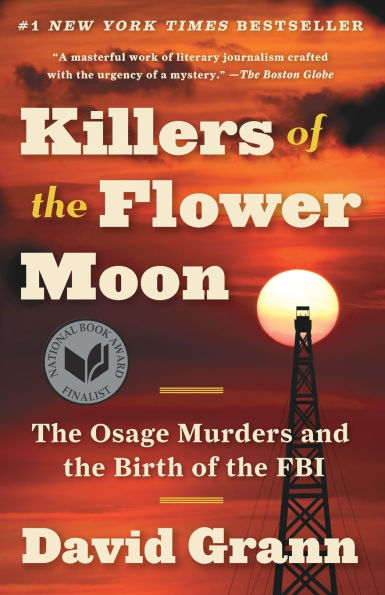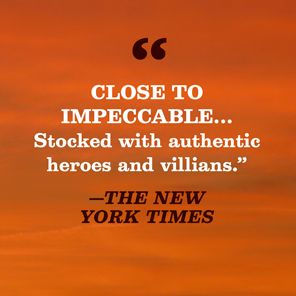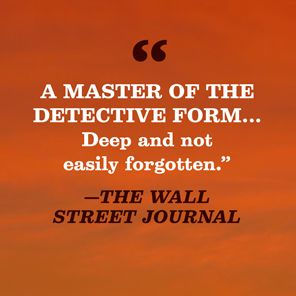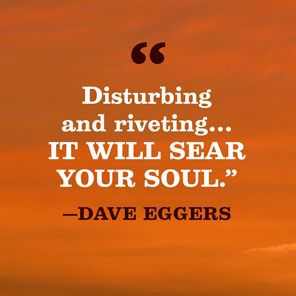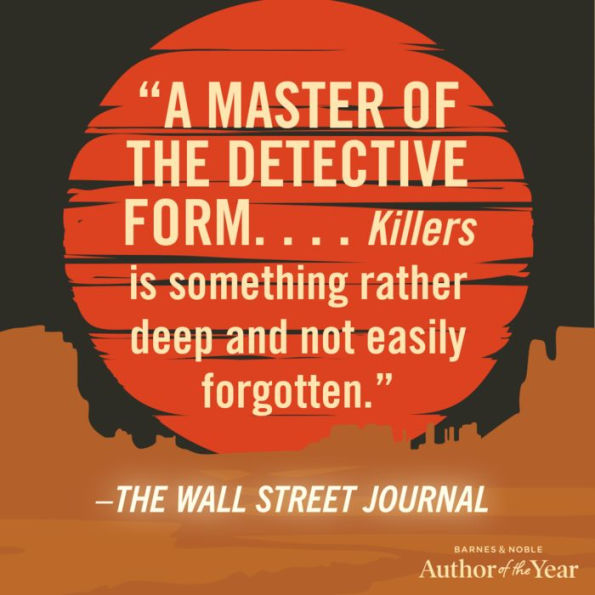Read an Excerpt
Chapter 1
The Vanishing
In April, millions of tiny flowers spread over the blackjack hills and vast prairies in the Osage territory of Oklahoma. There are Johnny-jump-ups and spring beauties and little bluets. The Osage writer John Joseph Mathews observed that the galaxy of petals makes it look as if the “gods had left confetti.” In May, when coyotes howl beneath an unnervingly large moon, taller plants, such as spiderworts and black-eyed Susans, begin to creep over the tinier blooms, stealing their light and water. The necks of the smaller flowers break and their petals flutter away, and before long they are buried underground. This is why the Osage Indians refer to May as the time of the flower-killing moon.
On May 24, 1921, Mollie Burkhart, a resident of the Osage settlement town of Gray Horse, Oklahoma, began to fear that something had happened to one of her three sisters, Anna Brown. Thirty-four, and less than a year older than Mollie, Anna had disappeared three days earlier. She had often gone on “sprees,” as her family disparagingly called them: dancing and drinking with friends until dawn. But this time one night had passed, and then another, and Anna had not shown up on Mollie’s front stoop as she usually did, with her long black hair slightly frayed and her dark eyes shining like glass. When Anna came inside, she liked to slip off her shoes, and Mollie missed the comforting sound of her moving, unhurried, through the house. Instead, there was a silence as still as the plains.
Mollie had already lost her sister Minnie nearly three years earlier. Her death had come with shocking speed, and though doctors had attributed it to a “peculiar wasting illness,” Mollie harbored doubts: Minnie had been only twenty-seven and had always been in perfect health.
Like their parents, Mollie and her sisters had their names inscribed on the Osage Roll, which meant that they were among the registered members of the tribe. It also meant that they possessed a fortune. In the early 1870s, the Osage had been driven from their lands in Kansas onto a rocky, presumably worthless reservation in northeastern Oklahoma, only to discover, decades later, that this land was sitting above some of the largest oil deposits in the United States. To obtain that oil, prospectors had to pay the Osage for leases and royalties. In the early twentieth century, each person on the tribal roll began receiving a quarterly check. The amount was initially for only a few dollars, but over time, as more oil was tapped, the dividends grew into the hundreds, then the thousands. And virtually every year the payments increased, like the prairie creeks that joined to form the wide, muddy Cimarron, until the tribe members had collectively accumulated millions and millions of dollars. (In 1923 alone, the tribe took in more than $30 million, the equivalent today of more than $400 million.) The Osage were considered the wealthiest people per capita in the world. “Lo and behold!” the New York weekly Outlook exclaimed. “The Indian, instead of starving to death . . . enjoys a steady income that turns bankers green with envy.”
The public had become transfixed by the tribe’s prosperity, which belied the images of American Indians that could be traced back to the brutal first contact with whites—the original sin from which the country was born. Reporters tantalized their readers with stories about the “plutocratic Osage” and the “red millionaires,” with their brick-and-terra-cotta mansions and chandeliers, with their diamond rings and fur coats and chauffeured cars. One writer marveled at Osage girls who attended the best boarding schools and wore sumptuous French clothing, as if “une très jolie demoiselle of the Paris boulevards had inadvertently strayed into this little reservation town.”
At the same time, reporters seized upon any signs of the traditional Osage way of life, which seemed to stir in the public’s mind visions of “wild” Indians. One article noted a “circle of expensive automobiles surrounding an open campfire, where the bronzed and brightly blanketed owners are cooking meat in the primitive style.” Another documented a party of Osage arriving at a ceremony for their dances in a private airplane—a scene that “outrivals the ability of the fictionist to portray.” Summing up the public’s attitude toward the Osage, the Washington Star said, “That lament, ‘Lo the poor Indian,’ might appropriately be revised to, ‘Ho, the rich redskin.’ ”
Gray Horse was one of the reservation’s older settlements. These outposts—including Fairfax, a larger, neighboring town of nearly fifteen hundred people, and Pawhuska, the Osage capital, with a population of more than six thousand—seemed like fevered visions. The streets clamored with cowboys, fortune seekers, bootleggers, soothsayers, medicine men, outlaws, U.S. marshals, New York financiers, and oil magnates. Automobiles sped along paved horse trails, the smell of fuel overwhelming the scent of the prairies. Juries of crows peered down from telephone wires. There were restaurants, advertised as cafés, and opera houses and polo grounds.
Although Mollie didn’t spend as lavishly as some of her neighbors did, she had built a beautiful, rambling wooden house in Gray Horse near her family’s old lodge of lashed poles, woven mats, and bark. She owned several cars and had a staff of servants—the Indians’ pot-lickers, as many settlers derided these migrant workers. The servants were often black or Mexican, and in the early 1920s a visitor to the reservation expressed contempt at the sight of “even whites” performing “all the menial tasks about the house to which no Osage will stoop.”
Mollie was one of the last people to see Anna before she vanished. That day, May 21, Mollie had risen close to dawn, a habit ingrained from when her father used to pray every morning to the sun. She was accustomed to the chorus of meadowlarks and sandpipers and prairie chickens, now overlaid with the pock-pocking of drills pounding the earth. Unlike many of her friends, who shunned Osage clothing, Mollie wrapped an Indian blanket around her shoulders. She also didn’t style her hair in a flapper bob, and instead let her long, black hair flow over her back, revealing her striking face, with its high cheekbones and big brown eyes.
Her husband, Ernest Burkhart, rose with her. A twenty-eight-year-old white man, he had the stock handsomeness of an extra in a Western picture show: short brown hair, slate-blue eyes, square chin. Only his nose disturbed the portrait; it looked as if it had taken a barroom punch or two. Growing up in Texas, the son of a poor cotton farmer, he’d been enchanted by tales of the Osage Hills—that vestige of the American frontier where cowboys and Indians were said to still roam. In 1912, at nineteen, he’d packed a bag, like Huck Finn lighting out for the Territory, and gone to live with his uncle, a domineering cattleman named William K. Hale, in Fairfax. “He was not the kind of a man to ask you to do something—he told you,” Ernest once said of Hale, who became his surrogate father. Though Ernest mostly ran errands for Hale, he sometimes worked as a livery driver, which is how he met Mollie, chauffeuring her around town.
Ernest had a tendency to drink moonshine and play Indian stud poker with men of ill repute, but beneath his roughness there seemed to be a tenderness and a trace of insecurity, and Mollie fell in love with him. Born a speaker of Osage, Mollie had learned some English in school; nevertheless, Ernest studied her native language until he could talk with her in it. She suffered from diabetes, and he cared for her when her joints ached and her stomach burned with hunger. After he heard that another man had affections for her, he muttered that he couldn’t live without her.
It wasn’t easy for them to marry. Ernest’s roughneck friends ridiculed him for being a “squaw man.” And though Mollie’s three sisters had wed white men, she felt a responsibility to have an arranged Osage marriage, the way her parents had. Still, Mollie, whose family practiced a mixture of Osage and Catholic beliefs, couldn’t understand why God would let her find love, only to then take it away from her. So, in 1917, she and Ernest exchanged rings, vowing to love each other till eternity.
By 1921, they had a daughter, Elizabeth, who was two years old, and a son, James, who was eight months old and nicknamed Cowboy. Mollie also tended to her aging mother, Lizzie, who had moved in to the house after Mollie’s father passed away. Because of Mollie’s diabetes, Lizzie once feared that she would die young, and beseeched her other children to take care of her. In truth, Mollie was the one who looked after all of them.
May 21 was supposed to be a delightful day for Mollie. She liked to entertain guests and was hosting a small luncheon. After getting dressed, she fed the children. Cowboy often had terrible earaches, and she’d blow in his ears until he stopped crying. Mollie kept her home in meticulous order, and she issued instructions to her servants as the house stirred, everyone bustling about—except Lizzie, who’d fallen ill and stayed in bed. Mollie asked Ernest to ring Anna and see if, for a change, she’d come over to help tend to Lizzie. Anna, as the oldest child in the family, held a special status in their mother’s eyes, and even though Mollie took care of Lizzie, Anna, in spite of her tempestuousness, was the one her mother spoiled.
When Ernest told Anna that her mama needed her, she promised to take a taxi straight there, and she arrived shortly afterward, dressed in bright red shoes, a skirt, and a matching Indian blanket; in her hand was an alligator purse. Before entering, she’d hastily combed her windblown hair and powdered her face. Mollie noticed, however, that her gait was unsteady, her words slurred. Anna was drunk.
Mollie couldn’t hide her displeasure. Some of the guests had already arrived. Among them were two of Ernest’s brothers, Bryan and Horace Burkhart, who, lured by black gold, had moved to Osage County, often assisting Hale on his ranch. One of Ernest’s aunts, who spewed racist notions about Indians, was also visiting, and the last thing Mollie needed was for Anna to stir up the old goat.
Anna slipped off her shoes and began to make a scene. She took a flask from her bag and opened it, releasing the pungent smell of bootleg whiskey. Insisting that she needed to drain the flask before the authorities caught her—it was a year into nationwide Prohibition—she offered the guests a swig of what she called the best white mule.
Mollie knew that Anna had been very troubled of late. She’d recently divorced her husband, a settler named Oda Brown, who owned a livery business. Since then, she’d spent more and more time in the reservation’s tumultuous boomtowns, which had sprung up to house and entertain oil workers—towns like Whizbang, where, it was said, people whizzed all day and banged all night. “All the forces of dissipation and evil are here found,” a U.S. government official reported. “Gambling, drinking, adultery, lying, thieving, murdering.” Anna had become entranced by the places at the dark ends of the streets: the establishments that seemed proper on the exterior but contained hidden rooms filled with glittering bottles of moonshine. One of Anna’s servants later told the authorities that Anna was someone who drank a lot of whiskey and had “very loose morals with white men.”
At Mollie’s house, Anna began to flirt with Ernest’s younger brother, Bryan, whom she’d sometimes dated. He was more brooding than Ernest and had inscrutable yellow-flecked eyes and thinning hair that he wore slicked back. A lawman who knew him described him as a little roustabout. When Bryan asked one of the servants at the luncheon if she’d go to a dance with him that night, Anna said that if he fooled around with another woman, she’d kill him.
Meanwhile, Ernest’s aunt was muttering, loud enough for all to hear, about how mortified she was that her nephew had married a redskin. It was easy for Mollie to subtly strike back because as one of the servants attending to the aunt was white—a blunt reminder of the town’s social order.
Anna continued raising Cain. She fought with the guests, fought with her mother, fought with Mollie. “She was drinking and quarreling,” a servant later told authorities. “I couldn’t understand her language, but they were quarreling.” The servant added, “They had an awful time with Anna, and I was afraid.”
That evening, Mollie planned to look after her mother, while Ernest took the guests into Fairfax, five miles to the northwest, to meet Hale and see Bringing Up Father, a touring musical about a poor Irish immigrant who wins a million-dollar sweepstakes and struggles to assimilate into high society. Bryan, who’d put on a cowboy hat, his catlike eyes peering out from under the brim, offered to drop Anna off at her house.
Before they left, Mollie washed Anna’s clothes, gave her some food to eat, and made sure that she’d sobered up enough that Mollie could glimpse her sister as her usual self, bright and charming. They lingered together, sharing a moment of calm and reconciliation. Then Anna said good-bye, a gold filling flashing through her smile.
With each passing night, Mollie grew more anxious. Bryan insisted that he’d taken Anna straight home and dropped her off before heading to the show. After the third night, Mollie, in her quiet but forceful way, pressed everyone into action. She dispatched Ernest to check on Anna’s house. Ernest jiggled the knob to her front door—it was locked. From the window, the rooms inside appeared dark and deserted.
Ernest stood there alone in the heat. A few days earlier, a cool rain shower had dusted the earth, but afterward the sun’s rays beat down mercilessly through the blackjack trees. This time of year, heat blurred the prairies and made the tall grass creak underfoot. In the distance, through the shimmering light, one could see the skeletal frames of derricks.
Anna’s head servant, who lived next door, came out, and Ernest asked her, “Do you know where Anna is?”
Before the shower, the servant said, she’d stopped by Anna’s house to close any open windows. “I thought the rain would blow in,” she explained. But the door was locked, and there was no sign of Anna. She was gone.
News of her absence coursed through the boomtowns, traveling from porch to porch, from store to store. Fueling the unease were reports that another Osage, Charles Whitehorn, had vanished a week before Anna had. Genial and witty, the thirty-year-old Whitehorn was married to a woman who was part white, part Cheyenne. A local newspaper noted that he was “popular among both the whites and the members of his own tribe.” On May 14, he’d left his home, in the southwestern part of the reservation, for Pawhuska. He never returned.










